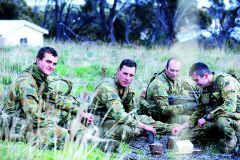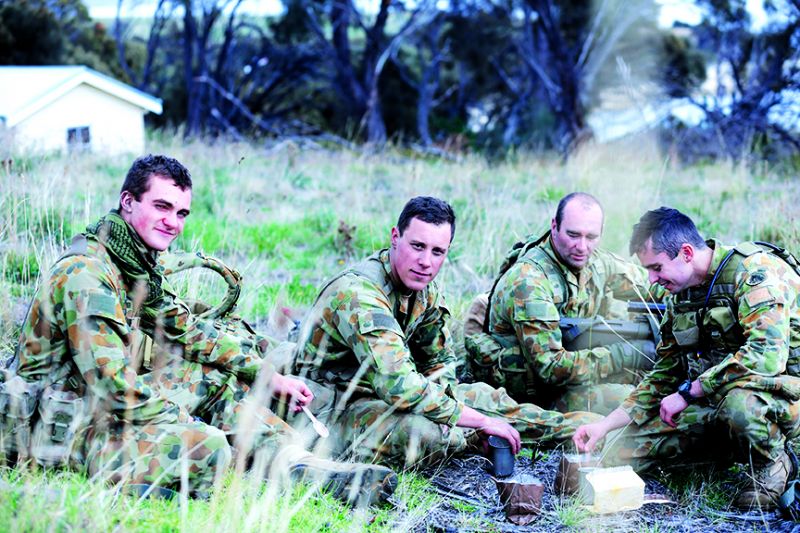
Research facilities to make critical contribution in $90 billion national naval shipbuilding enterprise.
The Australian Maritime College and University of Tasmania Defence Network will support the development of a national sovereign shipbuilding enterprise via a broad range of disciplines.
With Australia’s best maritime facilities and research expertise, AMC is well-positioned to make a critical contribution to the $90 billion National Naval Shipbuilding Enterprise which will construct 12 offshore patrol vessels, nine frigates and 12 submarines over the next 30 years.
AMC, which has an agreement with the Adelaide-based Naval Shipbuilding College, is also in a position to contribute well-trained personnel to the estimated 15,000 technical and skilled jobs required.
A Defence Maritime Innovation and Design Precinct based at the Newnham campus will comprise disciplines spread across the University under three pillars:
- Naval Systems and Maritime Assets
- Human Systems and Resilience
- Remote Sensing and Platforms
In April 2019, the Australian Government pledged $30 million over three years for Phase 1 of the Precinct, which will be broken into three tranches: $3m in 2020-21; $15m in 2021-22 and $12m in 2022-23.
AMC Principal Michael van Balen AO told a stakeholder briefing in September that an Operational Capability Description (OCD) on the Precinct for the Department of Defence would be completed early this year, to inform development of the project plan.
“Part A of the OCD was completed a couple of weeks ago and passed to Government for both comment and to provide background to Defence for funding allocation,” Mr van Balen said.
“We hope to get their feedback and then use that to assist development of Part B of the document which will range through the sorts of capabilities that we will look to achieve within the Precinct. We have been in discussions with the Defence Science and Technology Group (DSTG) Head of Land Division, Dr Peter Shoebridge, to provide input to the development of the DSTG paper that will go to the Defence Committee seeking the $30 million.”
Mr van Balen said human performance factors relating to maritime personnel and vessel design was a new field of study and would receive considerable attention from specialist areas within the University.
It will be important to leverage off the unique research capabilities that exist across the entirety of the University, through a cross-discipline approach - AMC Principal Michael van Balen AO
Defence Network domain development adviser Nicola Hodgman said the human capabilities and resilience stream would be informed through examination of human performance in places such as Antarctica.
Study areas would include cognitive psychology, food innovation, chemical detection, medical research, sports therapy and rehabilitation.
One of our distinct research capabilities is in Antarctica so we will be looking at how humans cope in extreme environments - Defence Network domain development adviser Nicola Hodgman
Elsewhere, the University’s Centre for Food Innovation at Scottsdale, in partnership with the Defence Science Technology Group and CSIRO, is researching nutritious food for defence personnel with an extended shelf life using microwave-assisted thermal sterilisation technology.
Overall, Mr van Balen says that under Phase 1, the Precinct facilities will be developed with the focus very much on enhancing existing research capability.
Enhanced Information and Communication Technology and a high-level computing capacity will be essential at the Precinct.
“The ability to go into a secure ICT system so that you can communicate directly with defence elements, or maritime contractors, at a secure level, is critical,” he said.
It would mean contractors and researchers would not be sitting in a void in terms of the information flow.
AMC has an established reputation for defence excellence through the existing ARC Research Training Centre for Naval Design and Manufacturing, where US, Uk and Australian defence organisations already carry out research work.
“The aim of the MDIDP is to grow the knowledge of all the various platforms that we as a nation are seeking to build over the next 30 years,” Mr van Balen said.
“Grow the knowledge and have the understanding of how the elements of the design of the platform work, use this knowledge to tailor the design to meet our requirements, test and evaluate the design to ensure it meets compliance, and then advance them further to ensure a progressive development of capability as we go into a batch building program. The Precinct is hoping to contribute to these areas through our niche research capabilities.”
Development of the MDIDP has been planned over three phases:
PHASE 1
Increasing existing capabilities, bringing in human factors into the network including cognitive performance and nutrition and the ICT component;
PHASE 2
Work to attract Defence primes and Tasmanian subject matter experts (local industry) into the Precinct;
PHASE 3
Construction investment phase as well as expanding on research and supporting elements.
The plan would seek to look 1015 years into the future.
In October 2019, Thales Australia became the first Defence prime to commit to the MDIDP. Thales has previously undertaken sonar testing research in Tasmania’s deep, cold and acoustically quiet lakes in 1991.
“We will be working with AMC and industry participants, such as AMOG Consulting, on advanced acoustic measurements to be taken at a wide range of speeds, over a number of distances, and with a high degree of precision using equipment designed with the expertise of the AMC,” Thales Australia Chief Executive Chris Jenkins said.
The remote lakes of Tasmania provide the perfect environment for these tests as supported by AMC and the Precinct.
Published on: 18 Sep 2020
